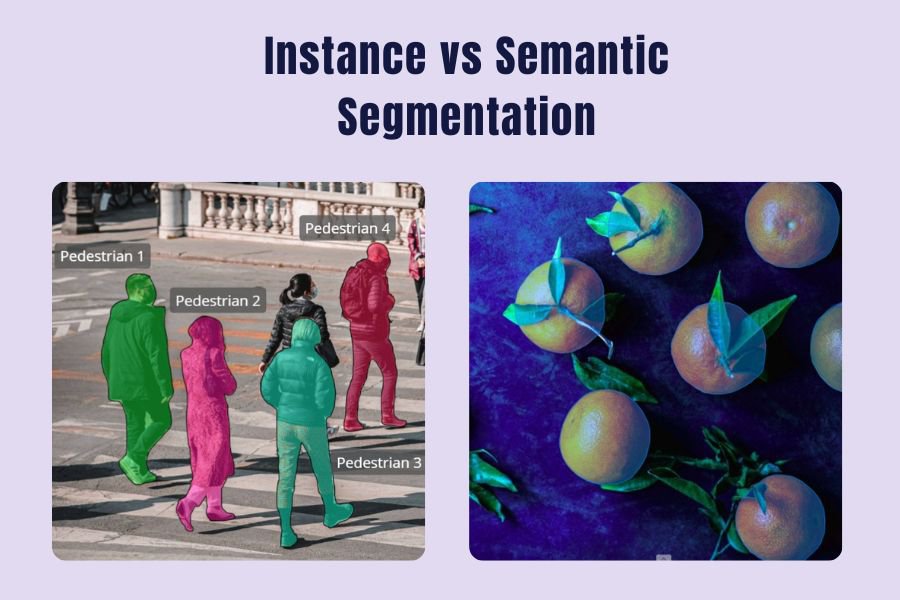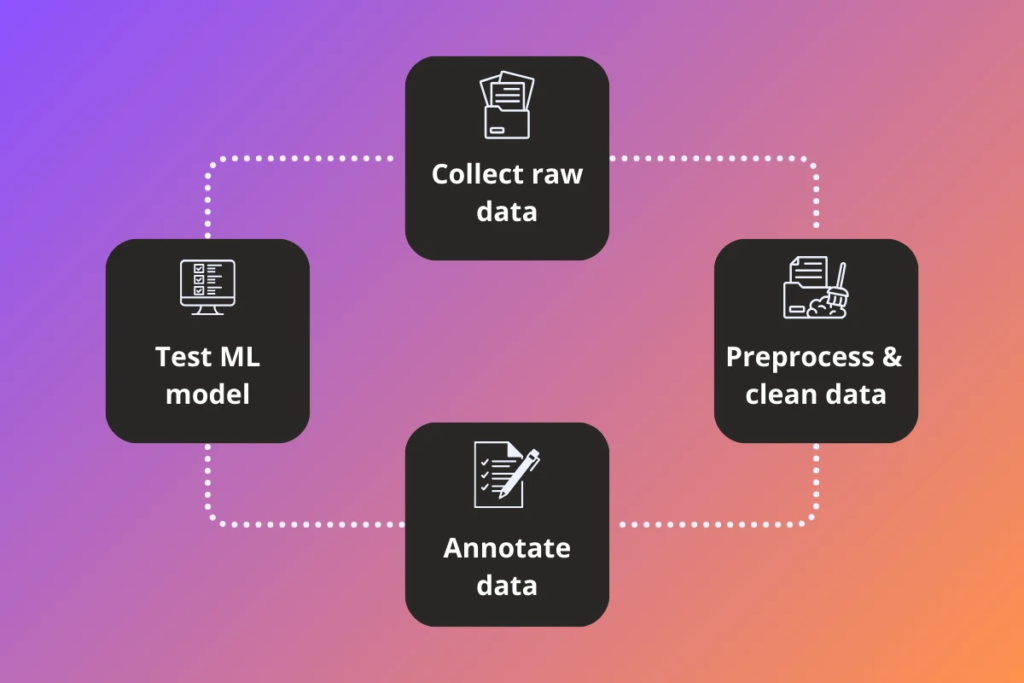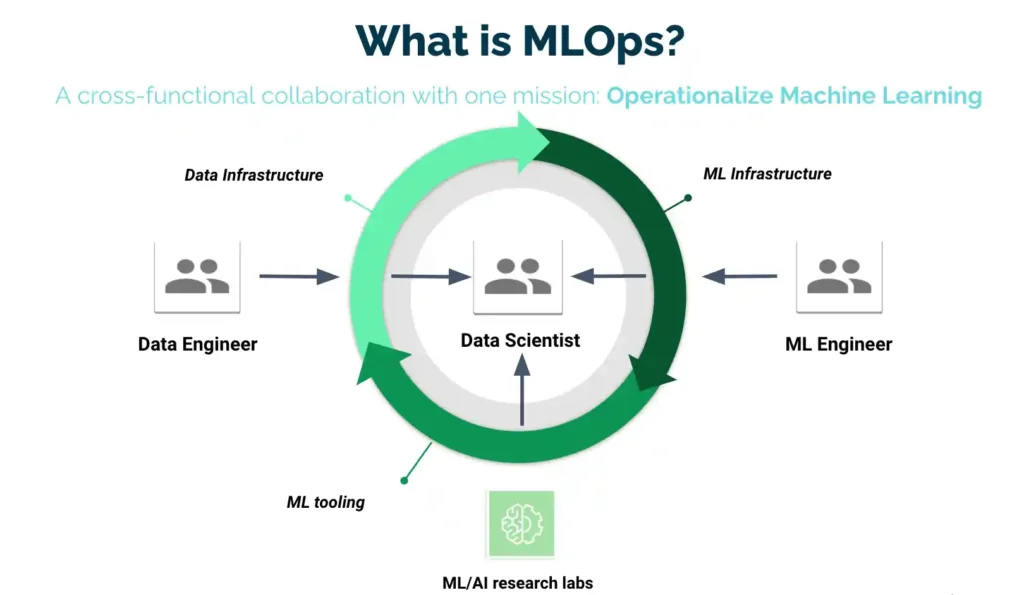Object Detection and Image Segmentation are two foundational tasks in the field of computer vision, playing a central role in enabling machines to interpret and analyze image content. While both aim to identify the presence of objects, they differ significantly in nature, output objectives, methodologies, and application domains.
This analysis provides an in-depth look into both techniques, clarifying their technical differences and presenting criteria for selecting the appropriate method for specific problems.
1. Conceptual Analysis and Output Objectives
The most fundamental difference lies in the granularity of the output information.
A. Object Detection
The goal of object detection is to answer two questions simultaneously:
What is the object? (Classification) and Where is the object? (Localization).
- Output: A set of rectangular bounding boxes, typically defined by the coordinates of the top-left and bottom-right corners. Each bounding box is associated with a class label (e.g., “car,” “pedestrian”) and a confidence score indicating the model’s certainty.
- Nature: Provides coarse-grained localization. The bounding box only indicates the general area containing the object and does not describe its precise shape or boundaries.
B. Image Segmentation
The goal of image segmentation is to assign a class label to each individual pixel in an image.
- Output: A segmentation mask, an image of the same size as the original, in which the value of each pixel corresponds to a class label.
- Nature: Provides fine-grained localization, accurately identifying the contours and areas occupied by objects.
Main types:
- Semantic Segmentation: Assigns the same label to all pixels belonging to the same object class, without distinguishing individual instances. For example, all cars in an image are labeled simply as “car.”
- Instance Segmentation: A more complex task that not only classifies each pixel but also differentiates between separate instances of the same class. For example, each car in the image is labeled individually (e.g., “car_1,” “car_2”).
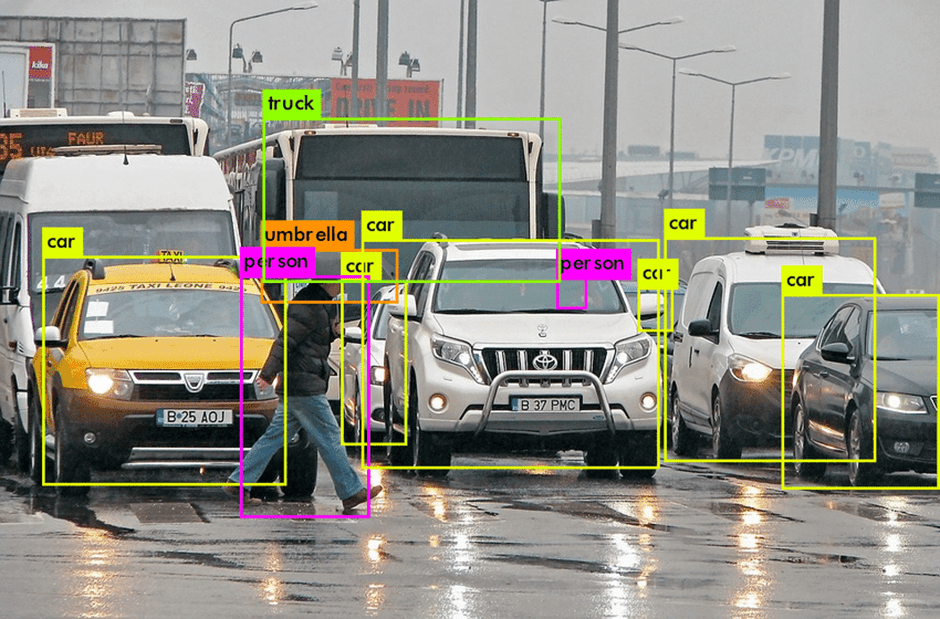
2. Comparison of Methodologies and Network Architectures
Although both rely on deep learning—particularly Convolutional Neural Networks (CNNs)—the model architectures for each task differ significantly.
Object Detection Methods:
Models are designed to predict bounding box coordinates and class probabilities. Popular architectures include:
- Region-based CNNs (e.g., R-CNN, Fast R-CNN): Operate in two stages (region proposal and classification).
- Single-stage models (e.g., YOLO, SSD): Predict both location and class in one step, optimizing for speed.
Image Segmentation Methods:
Architectures are optimized for dense output generation. Common models include:
- Fully Convolutional Networks (FCNs) and U-Net, which use an encoder-decoder architecture. The encoder extracts semantic features, while the decoder reconstructs the segmentation map at the original resolution.
3. Technical Challenges
Each technique faces its own unique set of challenges.
A. Challenges in Object Detection:
- Bounding Box Accuracy: Rectangular boxes cannot accurately capture the boundaries of irregularly shaped or rotated objects.
- Class Imbalance: Models tend to perform poorly on rare object classes, which are overshadowed by more frequent ones in the training data.
- Small Object Detection: Recognizing small objects is difficult due to limited available feature information.
B. Challenges in Image Segmentation:
- Computational Demand: Pixel-level processing and labeling require significantly more computational power and memory than object detection.
- Occlusion Handling: Inferring the full shape of a partially visible object is complex, especially in dynamic or crowded scenes.
- Boundary Ambiguity: Precisely defining the boundaries between objects—or between objects and the background—is difficult under low lighting or when objects have similar colors.
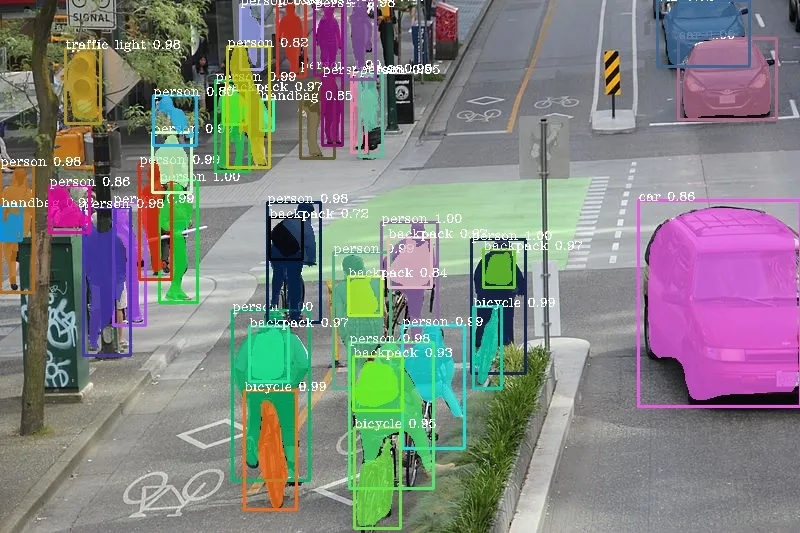
4. Application Domains and Selection Criteria
Choosing between the two techniques depends on the specific requirements of the task.
Choose Object Detection when:
- The main goal is to count, track, or determine the relative positions of objects.
- Real-time performance is critical (e.g., surveillance systems).
- Detailed object shape information is not necessary.
Choose Image Segmentation when:
- The goal is to analyze shape, measure area, or define precise object boundaries.
- A deep understanding of the spatial layout is required (e.g., navigable zones in autonomous vehicles).
- The application demands high accuracy, such as in medical imaging (e.g., tumor analysis) or satellite imagery analysis (e.g., land-use classification).
Conclusion
Object Detection and Image Segmentation are complementary techniques, not mutually exclusive. Object detection quickly and efficiently answers the question “what and where,” while image segmentation provides a detailed and precise understanding of space at the pixel level.
Understanding the technical differences, output goals, and associated challenges allows developers and engineers to choose the most appropriate method—or even combine both (as in instance segmentation)—to build more robust and comprehensive computer vision systems.
To ensure high-quality input data and optimize model performance, organizations can collaborate with professional data labeling service providers. Coral Mountain Data is a company that offers high-quality data labeling services for AI and machine learning models, helping clients build a strong data foundation to enhance performance across various applications.
Recommended for you
- News
What are Semantic and Instance segmentation techniques, and how do they differ from each other. Instance...
- News
Machine Learning starts with data—but not just any data. The accuracy, fairness, and reliability of your...
- News
Explore the intersecting worlds of Data Annotation and MLOps, and learn how they work together to...
Coral Mountain Data
Office
- Group 3, Cua Lap, Duong To, Phu Quoc, Kien Giang, Vietnam
- (+84) 39 652 6078
- info@coralmountaindata.com
Data Factory
- An Thoi, Phu Quoc, Vietnam
- Vung Bau, Phu Quoc, Vietnam

Copyright © 2024 Coral Mountain Data. All rights reserved.

